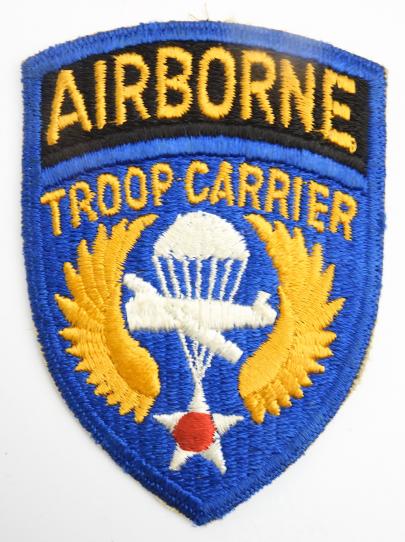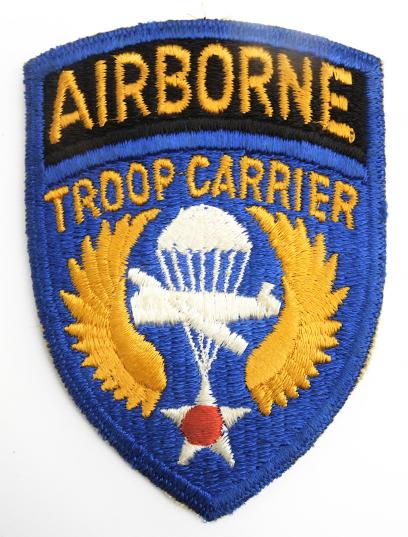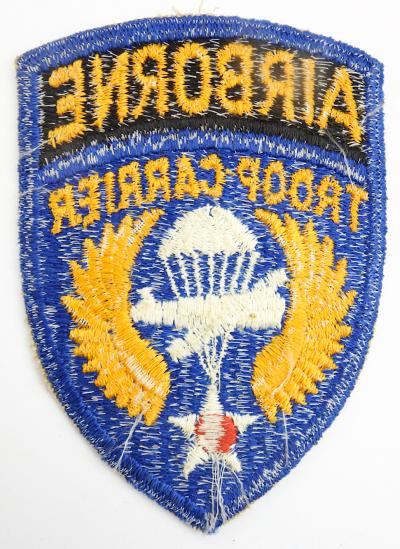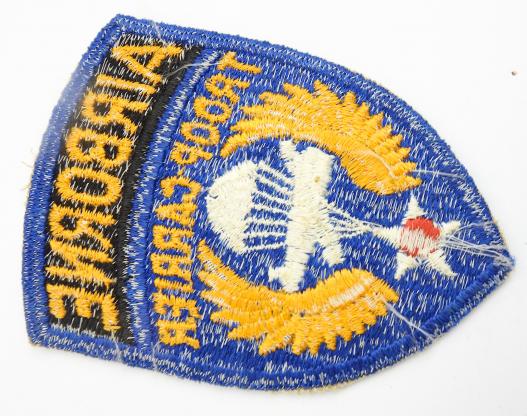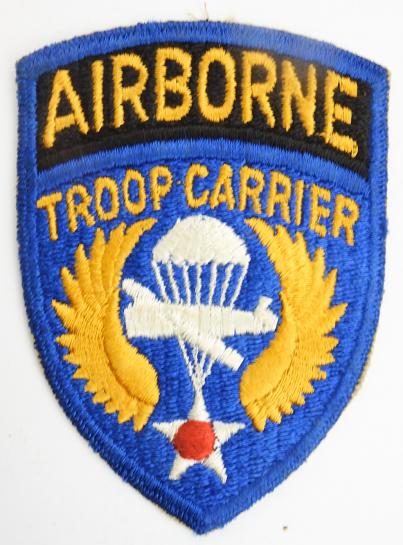US WW2 Airborne Troop Carrier Patch
US WW2 Airborne Troop Carrier Patch
Very nice US WW2 Airborne Troop Carrier Patch
I Troop Carrier Command was formed on 30 April 1942 when the Air Service Command 50th Transport Wing was transferred into a new unit named the Air Transport Command. However, it was soon discovered that this designation was wanted as a new name for the older Air Corps Ferrying Command, whose functions had been expanded beyond the limits implied by its title. Accordingly, the recently created Air Transport Command was redesignated the I Troop Carrier Command (I TCC).
With its activation, I TCC was assigned directly to Army Air Forces Headquarters, and the AAF established the troop carrier mission as one of the four combat missions of the Army Air Forces – bombardment, pursuit or fighter, reconnaissance and troop carrier.
Perhaps the most dramatic innovation in military tactics during World War II was the landing of airborne forces behind enemy lines. The American public was deeply impressed by the sight, in newsreels and photos, of skies filled with billowing parachutes as men fell earthward to encircle the enemy. The hardened paratrooper, with his peculiar gear, became a special kind of fighting hero, and his jumping cry, "Geronimo," became almost a byword.
While specially trained ground soldiers did the fighting after the landings, it was the responsibility of the Army Air Forces (AAF) to make the deliveries of men and supplies. To carry out this responsibility was the mission of AAF troop carrier units, serving under theater or task force commanders in cooperation with ground force elements. The training of these units, which had to be able to perform all phases of airborne operations, was the function of I Troop Carrier Command. Troop carrier headquarters was located throughout the war at Stout Field, Indianapolis, Indiana.
The task performed by I Troop Carrier Command, while quantitatively smaller than that of other domestic air forces, was nevertheless substantial. From December 1942 until August 1945 it produced more than 4,500 troop carrier crews; most of these were trained on the Douglas C-47 Skytrain although in the last year of war a considerable number flew the larger Curtiss C-46 Commando. In addition to the transport crews, which normally consisted of pilot, co-pilot, navigator, radio operator, and aerial engineer, some 5,000 Waco CG-4 glider pilots were prepared for their special function.
Following operational training, or during the final portion of it, troop carrier units engaged in combined exercises with elements of the Airborne Command (Army Ground Forces). It was not coincidental that several of I TCC's training schools were located on Army airfields on or near Army airborne division training camps. Pope Field was on Fort Bragg, home of the 82nd Airborne Division and later 11th Airborne Division. Grenada Field, Mississippi was located near Camp Claiborne, Louisiana, home of the 101st Airborne Division; Laurinburg-Maxton Army Air Base, North Carolina, was frequently the location of joint exercises between troop carrier units and Army airborne units.
Realistic training maneuvers between the Army airborne and Air Force troop carrier units were frequent. These maneuvers, which lasted for about two months, were divided into three phases. The first consisted of small-scale operations in which a company of airborne soldiers was transported, then would parachute out of aircraft into designated drop zones. The scale of movement was increased in the second period, and during the final phase whole divisions were moved as units over distances up to 300 miles, with both parachutists and towed CG-4 gliders being landed, frequently on auxiliary training airfields. After the exercise was completed, training in glider retrieval by the troop carrier units was conducted.
In each stage of combined training the troop carrier groups placed emphasis upon single- and double-tow of gliders under combat conditions and upon night operations. Attention was given to all types of airborne assignments, including resupply and evacuation by air.
Overal a very nice patch in very good condition.
Code: 63639
60.00 EUR



